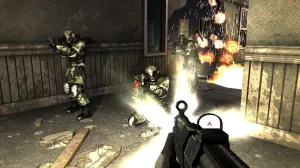Shining Resonance Refrain is a game stuck in time, for better and for worse. Westerners have waited a long time to play this, and in many ways, it represents everything we love about semi-contemporary JRPGs. The catch is that it also drags some cumbersome old-school baggage along with it, proving that some games age better than others.
Videos by ComicBook.com
Tell me if you’ve heard this one before: A mysterious young man with a shattered memory bears an incredible power within him; a power that he is afraid to use because it might consume him and those he cares most about. He is timid, bashful, and unsure of himself, but everyone else seems to think that he’s the most important person alive. This is Yuma, your protagonist in Shining Resonance Refrain, and basically every woman he meets thinks that he’s powerful, mysterious, and alluring. Most these women also have busts and hips disproportionate to the rest of their bodies, which are always on display, even through heavy armor.
While the setup may induce some serious eye-rolling, things do turn around rather nicely after a brief introductory mission, and there is plenty of novelty to enjoy here. Music plays a big role in the world of Shining Resonance, and you’ll notice that each weapon doubles as a musical instrument of some kind. This is a bright and colorful world where magical staves double as horns, greatswords are flutes, and bows can be played like harps.

Weapons also provide their own separate means of progression. In addition to leveling up your characters, you’ll also level up specific “tunings” for each weapon. You can think of tunings in the same way you would think of a class. Each weapon has its own unique tunings, but you can only have one equipped at any given time, per weapon.
Yuma’s default tuning, for example, will grant him an ability that blocks incoming attacks automatically without needing to press the block button. This is great for defensive players or newer players, while more aggressive players may opt for a tuning which increases Yuma’s attack speed. If you’re stuck on a certain boss, you may choose to grind up a tuning that grants a specific elemental damage bonus that you know that boss is weak to. Weapons can also be slotted with “aspects,” which grant additional offensive and defensive bonuses.
There’s one more important mechanic to keep in mind before going into battle, and that’s your “bond” to other characters. Characters will unlock various “traits” of their personality as you play through the game, and by equipping these traits, your relationship and bond with other characters in your party will change. By equipping complimentary traits, you can further fine-tune your party to act more aggressively, or else defend and heal you when you’re in trouble.
If that all sounds a little overwhelming, well, that’s because it can be. Shining Resonance Refrain shows you all of the moving parts — all of the interconnected cogs — that make combat what it is, without explaining them thoroughly. Thankfully, combat is actually much simpler than the preparation phase. You have a basic attack button that will wack opponents, and a “break attack” button that you’ll use to break through enemy defenses, leaving them in a broken and vulnerable state. Four spells can be equipped at any given time, and they can all be accessed with ease (though cast times can be pretty crazy).
And Yuma? He can transform into a giant freaking dragon at any time, as long as he has some MP. While you won’t be switching to your dragon form for the normal, grindy battles, it will save your neck in the tougher battles, especially if you have some musical backup. Once a special meter is sufficiently full, your entire party can execute a unique B.A.N.D. performance, which gives the entire party a significant limited-time buff. While the effects are active, it also keeps Yuma from the harmful side-effects of staying in dragon form for too long.

It takes some time, and a lot of commitment on the player’s part, but once you learn how to practically take advantage of your tunings, bonds, forces (spells), and special abilities, combat is a lot of fun; at least the challenging bits. Grinding still feels like grinding, and companion AI isn’t so sharp, but that’s something we’d expect from a JRPG from 2014.
The game looks and runs well enough, all things considered. I was playing on Nintendo Switch, and I’d say 80% of my playtime was in handheld mode. Textures are fairly flat, and I noticed a good deal of pop-in when running around Astoria’s central city, but it didn’t bother me. Character models look great, colorful and creative designs are everywhere to be enjoyed, and performance was steady. For those of you who have commitment issues with RPGs, I can’t recommend the Switch version enough. Being able to boot it up in bed for short bursts of grinding kept things moving along nicely.
All said, Shining Resonance Refrain does scratch the neo-classic JRPG itch in more ways than one. The story and waifu side-quests are a little cringey, and things get very grindy, but if you’re looking to pick this game up, then that’s probably exactly what you were looking for. This is a colorful, 40-hour affair that will delight series fans and Otakus everywhere, but it’s not for everyone. For the price, I think it’s well-worth the gamble.
ComicBook’s Score: 3.5 / 5








